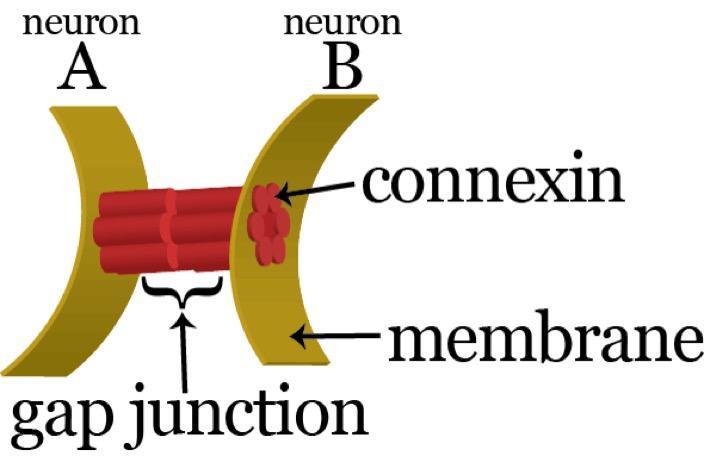Representative projects:
Analysis of cross-modal and cross-body sensory integration
 In order to properly orchestrate behavior, the brain needs to integrate sensory information from different modalities (e.g. vision, hearing, touch), and across different regions of the body (e.g. hand, foot). Tying a shoelace is an excellent example of such cross-modal cross-body integration. One effective way for investigating sensory integration is to study the impact of sensory loss on the system. Loss of a certain sensory modality can modulate the performance of remaining modalities (e.g. altered hearing in the blind). Loss of sensory input from one body part can modify the function of spared parts of the body (e.g. intact hand in amputees). These cross-sensory modulations are due, at least in part, to brain reorganization. However, the molecular and cellular machinery underlying these modulations is poorly understood, mainly due to the complexity of the system. Our approach is to address this problem in a simplified system - C. elegans. The rationale is that any nervous system of any animal, including C. elegans, must be capable of sensory integration, and should thus include at least the basic mechanisms that implement sensory integration. Indeed, we have found, for example, that loss of touch sensation to the main body of C. elegans leads to an enhanced sense of smell.
In order to properly orchestrate behavior, the brain needs to integrate sensory information from different modalities (e.g. vision, hearing, touch), and across different regions of the body (e.g. hand, foot). Tying a shoelace is an excellent example of such cross-modal cross-body integration. One effective way for investigating sensory integration is to study the impact of sensory loss on the system. Loss of a certain sensory modality can modulate the performance of remaining modalities (e.g. altered hearing in the blind). Loss of sensory input from one body part can modify the function of spared parts of the body (e.g. intact hand in amputees). These cross-sensory modulations are due, at least in part, to brain reorganization. However, the molecular and cellular machinery underlying these modulations is poorly understood, mainly due to the complexity of the system. Our approach is to address this problem in a simplified system - C. elegans. The rationale is that any nervous system of any animal, including C. elegans, must be capable of sensory integration, and should thus include at least the basic mechanisms that implement sensory integration. Indeed, we have found, for example, that loss of touch sensation to the main body of C. elegans leads to an enhanced sense of smell.
Further reading
- Rabinowitch I. and Bai J. (2016). The foundations of cross-modal plasticity. Communicative & Integrative Biology 9 (2), e1002348.
- Rabinowitch I., Laurent P., Zhao B., Walker D., Beets I., Schoofs L., Bai J., Schafer W.R. and Treinin M. (2016).Neuropeptide-driven cross-modal plasticity following sensory loss in C. elegans. PLoS Biology 14(1): e1002348.
Synthesis of new electrical synaptic connections in live neural circuits
 A prominent and effective way for investigating neural circuit operation is to analyze the function of existing circuits. This is done, for example, by studying the connectivity of these circuits or by monitoring or manipulating the activity of the neurons in the circuit. Our lab performs considerable research of this analytical type. At the same time, we also aim to advance a complementary approach that is based on synthesis rather than analysis. Our ultimate goal is to construct new neural circuits in a live organism, in order to gain deeper understanding of how circuits work, how they are incorporated into the rest of the nervous system and what are the functional advantages and disadvantages of particular circuit configurations. As a first step, we have developed a technique for inserting new electrical synapses between specific C. elegans neurons. To do this we take advantage of the relative simplicity of electrical synapses, which are based on physical channels, called gap junctions that enable electrical flow between neurons. To insert a new gap junction between two adjacent C. elegansneurons we express exclusively in these neurons the mouse gap junction protein, connexin. Connexin readily expresses in a variety of C. elegans neurons in a synapse-like punctate pattern. Our calcium imaging experiments have demonstrated the formation of new functional electrical synapses following simultaneous expression of connexin in the two neurons, but not when it is expressed only in one of the neurons. We have used this technique in various contexts, for example, for altering chemotaxis (navigation towards odor sources) by redirecting information flow in an olfactory circuit, and for studying a hub-and-spoke circuit motif. A lot of exciting work awaits us using connexins for synaptic engineering and developing new ways for artificially programming the nervous system.
A prominent and effective way for investigating neural circuit operation is to analyze the function of existing circuits. This is done, for example, by studying the connectivity of these circuits or by monitoring or manipulating the activity of the neurons in the circuit. Our lab performs considerable research of this analytical type. At the same time, we also aim to advance a complementary approach that is based on synthesis rather than analysis. Our ultimate goal is to construct new neural circuits in a live organism, in order to gain deeper understanding of how circuits work, how they are incorporated into the rest of the nervous system and what are the functional advantages and disadvantages of particular circuit configurations. As a first step, we have developed a technique for inserting new electrical synapses between specific C. elegans neurons. To do this we take advantage of the relative simplicity of electrical synapses, which are based on physical channels, called gap junctions that enable electrical flow between neurons. To insert a new gap junction between two adjacent C. elegansneurons we express exclusively in these neurons the mouse gap junction protein, connexin. Connexin readily expresses in a variety of C. elegans neurons in a synapse-like punctate pattern. Our calcium imaging experiments have demonstrated the formation of new functional electrical synapses following simultaneous expression of connexin in the two neurons, but not when it is expressed only in one of the neurons. We have used this technique in various contexts, for example, for altering chemotaxis (navigation towards odor sources) by redirecting information flow in an olfactory circuit, and for studying a hub-and-spoke circuit motif. A lot of exciting work awaits us using connexins for synaptic engineering and developing new ways for artificially programming the nervous system.
Further reading
- Rabinowitch I. and Schafer W.R. (2015). Engineering new synaptic connections in the C. elegans connectome. Worm 4, e992668.
- Rabinowitch I.*, Chatzigeorgiou M.*, Zhao B., Treinin M. and Schafer W.R. (2014). Rewiring neural circuits by the insertion of ectopic electrical synapses in transgenic C. elegans. Nature Communications 5:4442.
* Equal contribution

